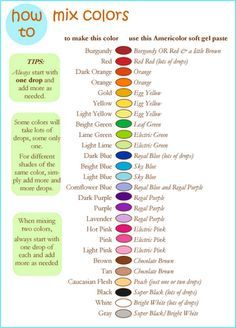FOOD COLORING BASICS: What colors to buy and how to use it.


FOOD COLORING BASICS: What colors to buy and how to use it.
[quads id=11]
Food coloring is a common ingredient used in a variety of dishes to enhance their appearance, creating vibrant and eye-catching colors that make the food more visually appealing. Whether you’re baking a cake, making icing, or preparing a colorful dish, understanding the basics of food coloring can help you achieve the desired results.
When it comes to food coloring, there are a few basic colors that you should have in your pantry. The primary colors are red, blue, and yellow, which can be mixed together to create a wide range of secondary colors such as green, orange, and purple. In addition to these primary colors, it’s also useful to have white and black food coloring to lighten or darken the shades of colors when necessary.
When choosing food coloring, it’s important to opt for gel or liquid food coloring rather than powder form, as they are easier to mix and provide more vibrant colors. Gel food coloring is thicker and more concentrated, which means you need to use less of it to achieve the desired color intensity. Liquid food coloring, on the other hand, is more readily available and easier to find in stores.
To use food coloring effectively, start by adding a small amount of the coloring to your food or icing, and gradually increase the amount until you achieve the desired shade. It’s important to mix the coloring well to ensure that the color is evenly distributed throughout the mixture. Remember that food coloring tends to darken as it sits, so it’s best to add a little at a time and allow it to rest before adding more if needed.
If you’re looking to create specific colors, here are some basic combinations to keep in mind:
– To make green, mix yellow with a small amount of blue.
– To make orange, mix yellow with a small amount of red.
– To make purple, mix blue with a small amount of red.
It’s also important to note that some food coloring can alter the flavor of your dish, particularly when using large amounts. To avoid this, opt for natural food coloring alternatives such as beet juice, turmeric, or spirulina powder, which can provide vibrant colors without affecting the taste of your food.
In conclusion, food coloring is a versatile ingredient that can help you create beautiful and visually appealing dishes. By understanding the basics of food coloring and how to use it effectively, you can confidently experiment with different colors and create dishes that are both delicious and visually stunning.